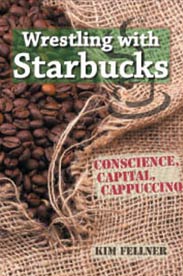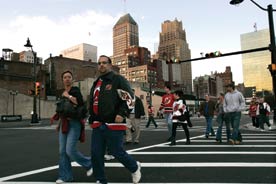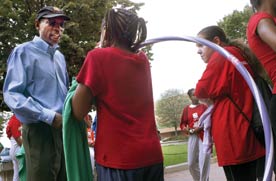At the same time, however, many struggling communities were more than eager to have a Starbucks. As one of the advisory neighborhood commissioners from D.C.‘s largely African-American Anacostia neighborhood told the Washington Post several years ago, “We’re wondering what is it about our neighborhood, that everywhere else people are whining that they have too many Starbucks, why can’t we get even one?”
It looks like economically marginal neighborhoods striving for a Starbucks will have to wait. This summer, with Starbucks’ stock price hovering in the mid-teens (down from a high of $40 a share in late 2004), the company announced the closure of 616 “underperforming” stores, representing nearly 9 percent of its 7,200 U.S. company-operated venues. While media commentators took smug satisfaction in humbling the once-unstoppable coffee giant — and most of us are not likely to miss a handful of mermaids in over-saturated cities — the news dismayed some affected communities, who saw the chain’s departure as a marker of their own failure to thrive and an economic landscape that was getting bleaker. After reporting on a Starbucks store closing in downtown Newark, N.J., The New York Times went so far as to editorially lament the company’s decision, suggesting that the closing belied Starbucks’ avowed commitment to diversity and communities.
As I perused the list of doomed stores, one popped out at me. It was located on Wilkinson Boulevard in Charlotte, N.C. I had written about that very store in my book. Like my local Eastern Market Starbucks in Washington, D.C., the Charlotte store was part of Urban Coffee Opportunities (UCO), a joint venture between Starbucks and Magic Johnson Enterprises, owned by the former Los Angeles Lakers basketball star, to bring upscale coffee to lower-income neighborhoods.
I had interviewed Johnson at the grand opening of that store in July 2006, on a tired strip of Wilkinson Boulevard, next to a Wal-Mart Supercenter. Before Interstate 85 was built, Wilkinson Boulevard was the main thoroughfare between the airport and the city. But that was decades ago, and the street had become a dispiriting mix of boarded-up factories interspersed with a few fast-food restaurants, pawn shops, and the like. It was no wonder that most of the residents saw the advent of Starbucks as an improvement.
Looming over everyone else in the room, Johnson had chatted up local politicians, answered questions from the press, signed memorabilia, and posed with neighborhood kids. “Everyone thought minorities would not commonly invest three or four dollars in a cup of coffee,” Johnson told me. “But it’s not just a great cup of coffee; it’s a meeting place. We don’t have meeting places in our communities, and we don’t have job opportunities. Starbucks provides both. And it attracts other retailers. People come in behind you because they know we attract foot traffic.”
I talked with two older women from the neighborhood. “The coffee’s not what I expected,” one of them confided. “I can make this good at home, and I’m glad I got to taste it before I spent my money.” But the women were glad that both the Starbucks and the Wal-Mart were there. And no one was worrying about gentrification. “This is an area that needs economic development,” a county commissioner told me. “It will be many years before gentrification happens here.”
Reading about the closing of the store, I recalled the conversations. I remembered the all-African-American staff, aspiring and optimistic, from the baristas through the district manager, and wondered how they had fared. Apparently, Johnson had been wrong; even a nice meeting place couldn’t boost the popularity of a three-dollar cup of coffee, at least not at that venue, or in this economy. And the commissioner was right: Successful economic development, let alone gentrification, was a long way away.
The line between positive and predatory economic development is sometimes hard to draw, and a lot depends on who draws it. It’s also sometimes hard to say on which side of the line Starbucks will fall. There are indeed situations, as in San Francisco’s Japantown, where a neighborhood whose real estate has become extremely desirable wants to retain its own vibrant culture, support its businesses, and resist displacement. These are the fights worth fighting. And Starbucks has been known to back down. But to hold the company accountable for our excesses of consumption, the mixed consequences of gentrification, or the evils of capitalism is a waste of time. Resolving these issues is not in Starbucks’ power. To fight those fights, we need another venue. Perhaps even a revolution in global economic policy and how we define our values.





Comments